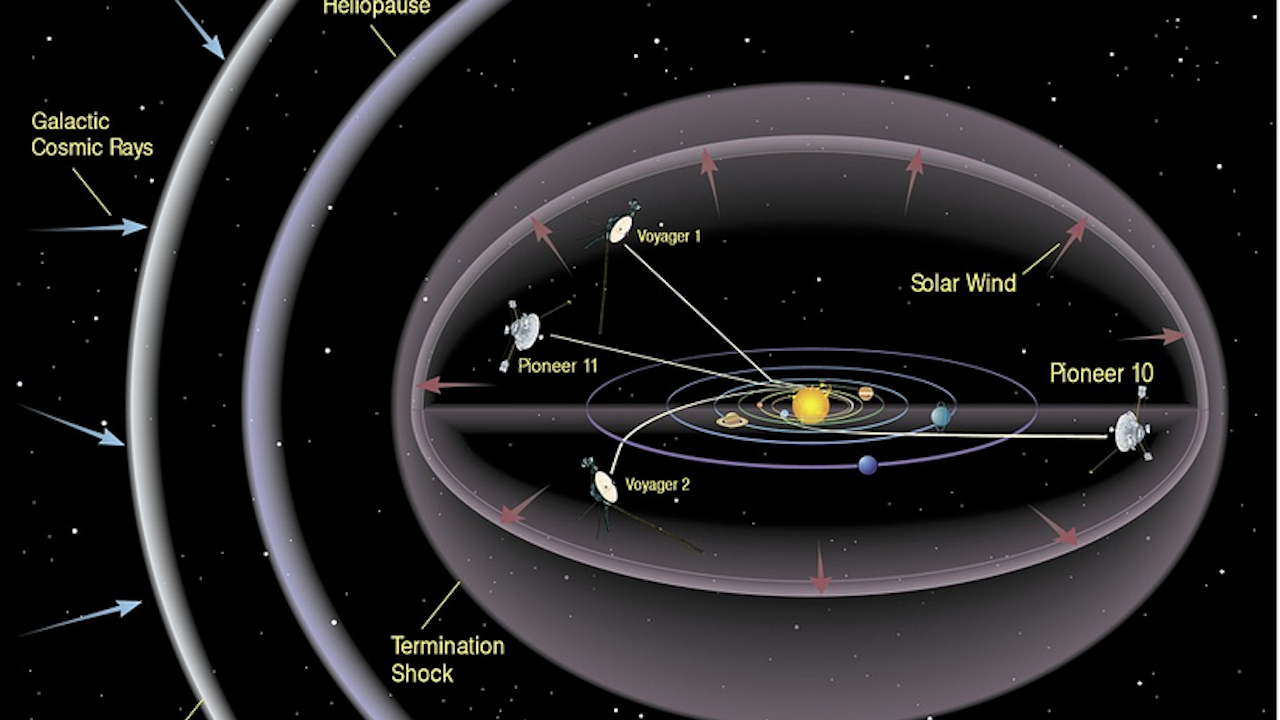Listen to the news
Voyager 1 is still exploring interstellar space 45 years after its launch, but it turns out that there is a problem that puzzles the spacecraft crew on Earth, according to the BBC.
Voyager 1 continues to work well, despite its advanced age and the distance of 23.3 billion kilometers traveled from Earth.
It can receive and execute commands sent by NASA, as well as collect and send back scientific data.
But the readings from the system that controls the orientation of the spacecraft in space do not coincide with what the probe is actually doing, BTV reported.
Voyager 1 heard the mysterious "buzzing" of interstellar space
The position articulation and control system, or AACS, ensures that the probe's antenna remains pointed at the Earth so that the aircraft can send data back to NASA.
Due to the location of the Voyager in the light, it takes 20 hours and 33 minutes to travel in one direction, so that the call and response to a message between NASA and the probe takes two days.
For now, the Voyager team believes that AACS is still working, but the data from the tool seems random or impossible.
The problem with the system so far has not triggered anything to put the spacecraft in "safe mode".
Then only basic operations are performed so that engineers can diagnose a problem that would put the spacecraft at risk.
The Voyager signal is still strong, which means that the antenna is still aimed at the Earth.
The team is trying to determine if this incorrect data is coming directly from this tool or if another system is causing it.
"Until the nature of the problem is better understood, the team cannot predict whether this could affect how long the spacecraft can collect and transmit scientific data," NASA said in a statement.
"Such a mystery is not normal at this stage of the Voyager mission," said Susan Dodd, Voyager 1 and 2 project manager at NASA's Jet Propulsion Laboratory in California.
"Both spacecraft are almost 45 years old, which is far more than the time planned for the mission.
We are also in interstellar space, a high-radiation environment in which no spacecraft has flown before.
So there are some big challenges for the engineering team.
But I think if there is a way to solve this problem with AACS, our team will find it, "Dodd said.
If the team does not determine the source of the problem, it can simply adapt to it, she added.
Or if they can find it, the problem can be solved by changing the software or relying on a hardware system.
The probe already relies on its backup systems to last as long as possible.
In 2017, it launched propulsion devices that were used during its initial planetary encounters in the 1970s, and they are still working after being left unused for 37 years.
Aging wells produce very little energy per year, so subsystems and heaters have been shut down over the years.
Voyager 2, a twin spacecraft, continues to operate well in interstellar space 12.1 billion miles from Earth.
By comparison, Neptune, the most distant planet from Earth, is only 2.9 billion miles away.
Both probes were launched in 1977 and far exceeded their original goal of flying past planets.
They have now become the only two spacecraft to collect data from interstellar space and provide data on the heliosphere or balloon created by the Sun, which extends beyond the planets in our solar system.
The Voyager 1 probe is still exploring interstellar space 45 years after launching, but it has encountered an issue that mystifies the spacecraft's team on Earth.
https://t.co/RSosEtJb1D
- CNN International (@cnni) May 18, 2022
NASA
Voyager 1
